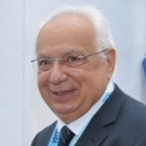Electromagnetic Wave Absorbing Structures
A special issue of Materials (ISSN 1996-1944).
Deadline for manuscript submissions: closed (30 September 2018) | Viewed by 35408
Special Issue Editors
Interests: materials science; aerospace structures
Special Issues, Collections and Topics in MDPI journals
Interests: radar absorbing structures; electromagnetic weave propagation in lossy media; mobile telecommunications technologies; material science.
Special Issue Information
Dear Colleagues,
Electromagnetic Wave Absorbing Structures are becoming an important topic in most technologies and environments where the main focus is to reduce the level of electromagnetic fields in certain places or systems. In particular, they are employed in reducing radar signature and/or the power density of electromagnetic interference in defence, telecommunication, medical systems, laboratory environments, and in human health care and public safety issues too. In systems where electromagnetic shielding effectiveness need to be improved, absorbing materials play a central role in lower down the amount of reflected and transmitted electromagnetic waves. Typically, the lower the frequency the harder to build effective absorbers at the cost of increased final thickness. Nowadays, some research on electromagnetic wave absorbers is focused on monolayer structures, whereas others make use of layered structures. Recently, these last have also been successfully applied to mimic reflection coefficient profiles, a priori established in metrology and defense technologies. Research works currently span electric and magnetic properties of materials to improve electromagnetic wave absorbing capabilities. In such a contest, most studies make use composites made with carbon nanoparticles. Other research is focused on foamed structures.
We invite full papers, communications, and reviews that cover one or several of the listed keywords below.
Prof. Mario Marchetti
Dr. Davide Micheli
Guest Editors
Manuscript Submission Information
Manuscripts should be submitted online at www.mdpi.com by registering and logging in to this website. Once you are registered, click here to go to the submission form. Manuscripts can be submitted until the deadline. All submissions that pass pre-check are peer-reviewed. Accepted papers will be published continuously in the journal (as soon as accepted) and will be listed together on the special issue website. Research articles, review articles as well as short communications are invited. For planned papers, a title and short abstract (about 100 words) can be sent to the Editorial Office for announcement on this website.
Submitted manuscripts should not have been published previously, nor be under consideration for publication elsewhere (except conference proceedings papers). All manuscripts are thoroughly refereed through a single-blind peer-review process. A guide for authors and other relevant information for submission of manuscripts is available on the Instructions for Authors page. Materials is an international peer-reviewed open access semimonthly journal published by MDPI.
Please visit the Instructions for Authors page before submitting a manuscript. The Article Processing Charge (APC) for publication in this open access journal is 2600 CHF (Swiss Francs). Submitted papers should be well formatted and use good English. Authors may use MDPI's English editing service prior to publication or during author revisions.
Keywords
- Electromagnetic wave absorbers based on composites and thermoplastic materials
- Electromagnetic wave absorbers based on foam structures
- Electromagnetic wave absorbers based on nanoparticles
- Electromagnetic wave absorbers based on multilayer structures
- Electromagnetic wave absorbers based on fibrous structures







